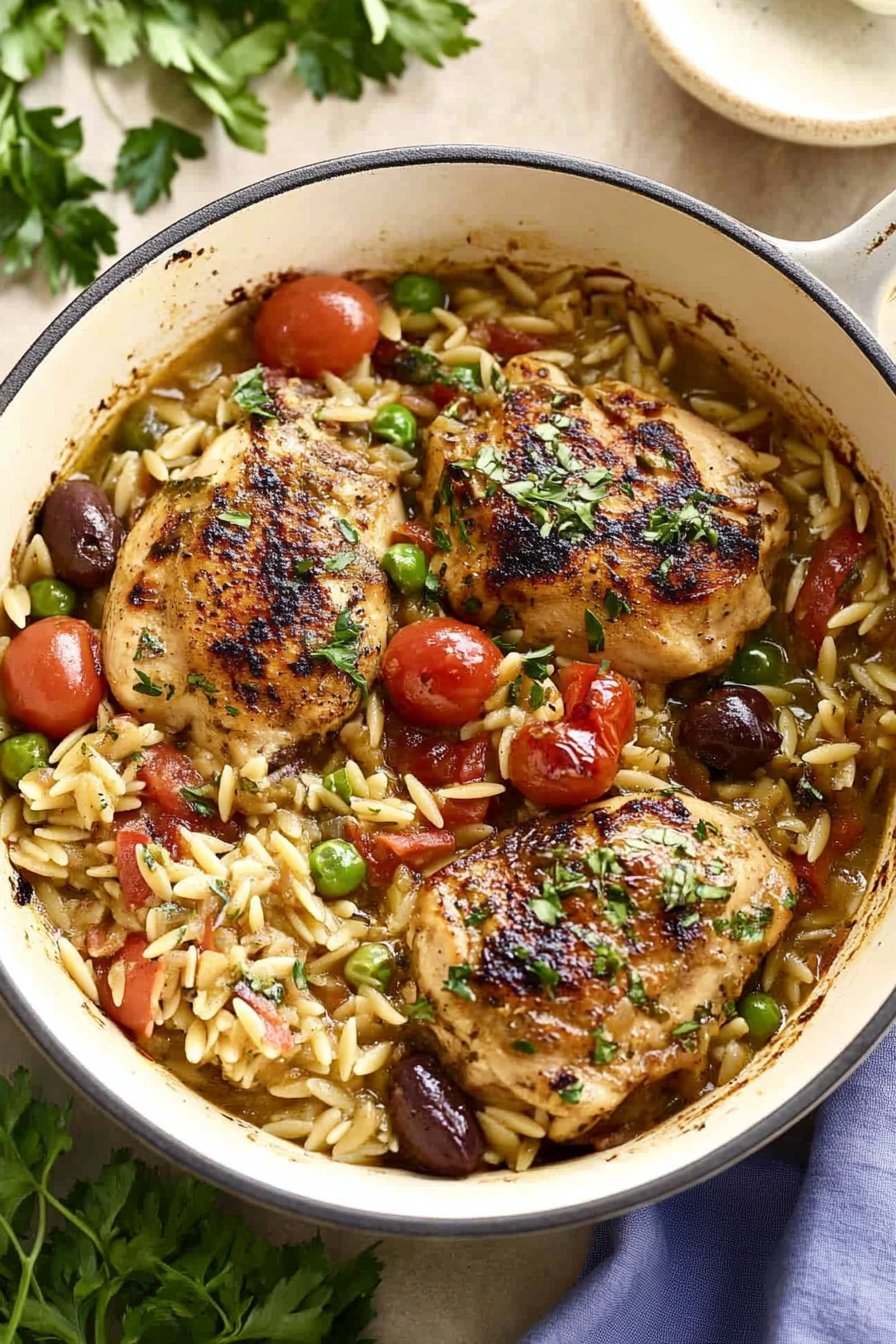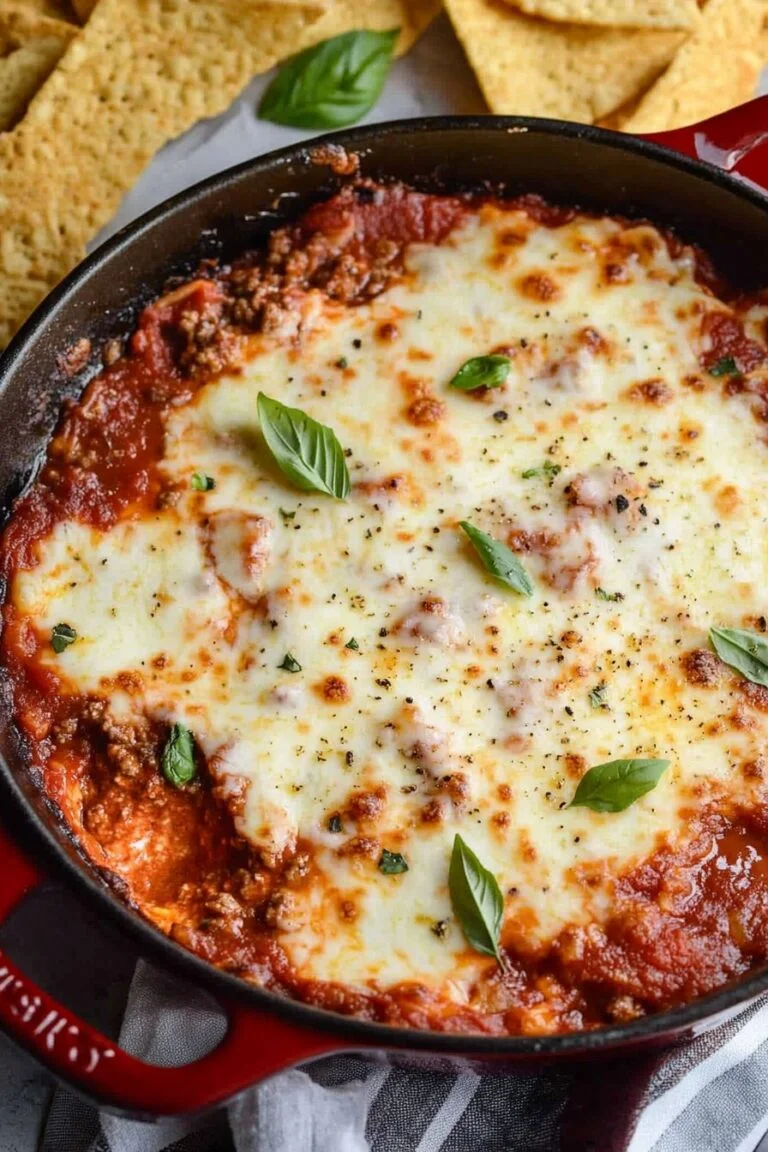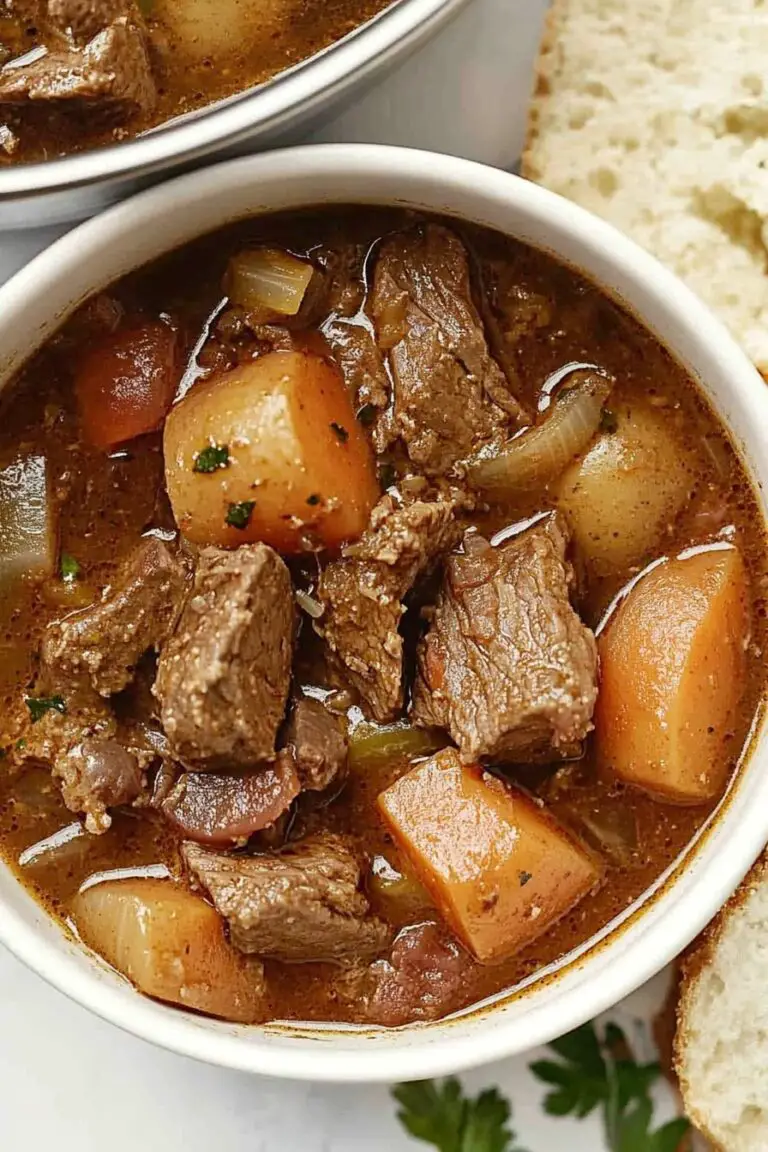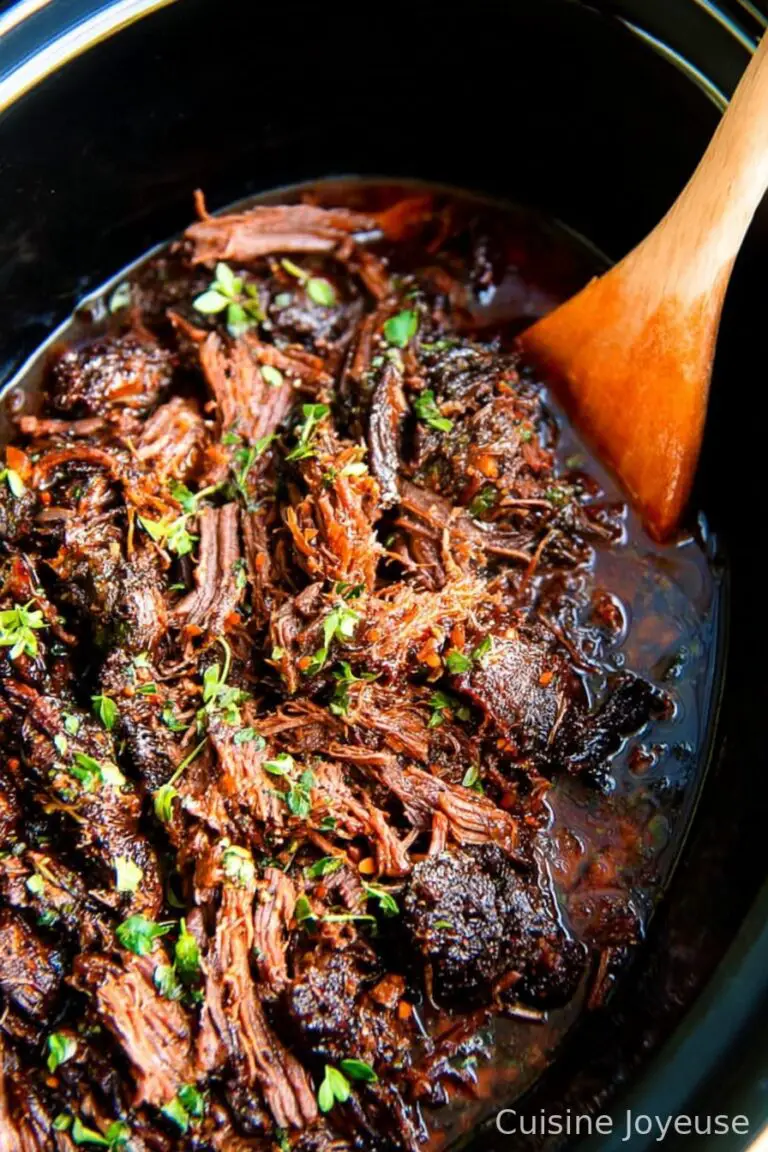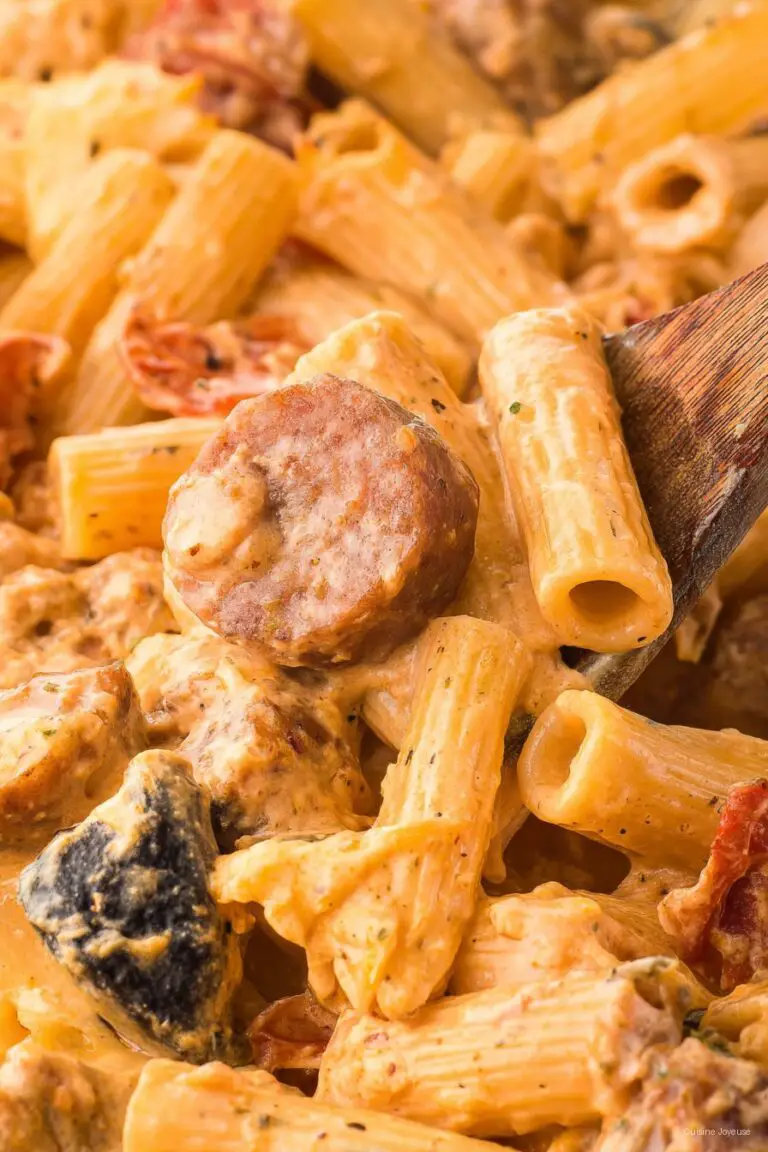Greek Chicken and Orzo
Let Me Tell You About My Greek Chicken and Orzo Story
Alright, so here’s the thing—Greek Chicken and Orzo is one of those meals I reach for when I want something both hearty and kinda comforting, but don’t necessarily want to spend my whole evening in the kitchen (especially after a long Tuesday, y’know?). I think the first time I made it, I was trying to impress my brother-in-law, who, for some reason, thinks he’s Gordon Ramsay. Spoiler: He went back for seconds. Oh, and if you’ve ever managed to spill orzo on the floor, you’ll know it scatters like confetti at a New Year’s do—so watch out for that, because I definitely didn’t the first time.
Why You’ll Love This—Besides the Obvious
I pull this recipe out whenever I want to make something everyone actually eats without picking out half the stuff (there’s always someone, right?) My family goes a bit mad for it, mainly because the lemony chicken just smells so good that people start hovering around the stove. Plus, if you’re as impatient as I am sometimes, you’ll love that it’s not super fussy. I used to hate how some recipes want you to dirty every pan in your kitchen—this one manages in just one or two.
What You’ll Need (And a Few Swaps)
- 4 boneless, skinless chicken thighs (breasts work too, but thighs, honestly, are juicier—my gran swore by them)
- 1 cup orzo pasta (though, I’ve also used stelline in a pinch—works fine!)
- 1 1/2 cups chicken stock (I sometimes use veggie if that’s what’s kicking about)
- 1 large lemon, zested and juiced (sometimes I add two lemons because I love the tang)
- 2-3 cloves garlic, chopped (or more if you’re on Team Garlic, like me)
- 1 small red onion, diced (white’s okay if that’s all you’ve got; it’s not a deal-breaker)
- 1 tsp dried oregano (fresh is fancy, but dried is what’s usually in my cupboard)
- 1 handful cherry tomatoes, halved (or just chop up a regular tomato honestly)
- 1/2 cup crumbled feta (my partner hates feta, so I sometimes use goat cheese—don’t tell the Greeks)
- Olive oil, salt, pepper
- A bit of fresh parsley, chopped, for the top (if you remember)

How I Make It (With a Few Side Comments)
- First, get yourself a big-ish skillet or sauté pan. Heat a glug of olive oil over medium heat. Throw in your chicken thighs, season them up with salt, pepper, and half the oregano. Sear until browned on both sides—it usually takes about 3-4 minutes per side. Don’t worry if they stick a bit, that crust is flavor.
- Remove the chicken and let it rest on a plate. I usually sneak a bite at this point—chef’s treat. Add a bit more oil if the pan’s dry, then toss in your diced onion. Cook until it smells sweet and starts to go golden, about 3-5 minutes. Stir in the garlic, but don’t wander off or it’ll burn (been there, done that).
- Tip in the orzo, give it a good stir so it gets toasty and picks up all that flavor left behind. Pour in the stock, then add your lemon juice and zest. Stir all this together; it’ll look a bit soupy, but trust the process!
- Nestle the chicken back in, sprinkle over the rest of the oregano, and scatter in the tomatoes. Cover and let it all simmer on low for about 15 minutes, or until the orzo is tender and most of the liquid is gone. Sometimes I give it a gentle stir halfway through so nothing sticks.
- Crumble over the feta, drizzle with a bit more olive oil, and finish with parsley (if you remembered). Let it sit for a couple minutes—actually, I find it thickens up nicely if you give it a minute. Then serve!
Notes I’ve Picked Up the Hard Way
- If you use chicken breasts, maybe check on them a couple minutes earlier. They dry out quicker than thighs (learned that the hard way…)
- The orzo likes to stick to the bottom if you forget about it—set a timer, or just don’t get distracted by the telly.
- Don’t panic if it looks a bit gloopy at first. It’ll firm up as it sits.
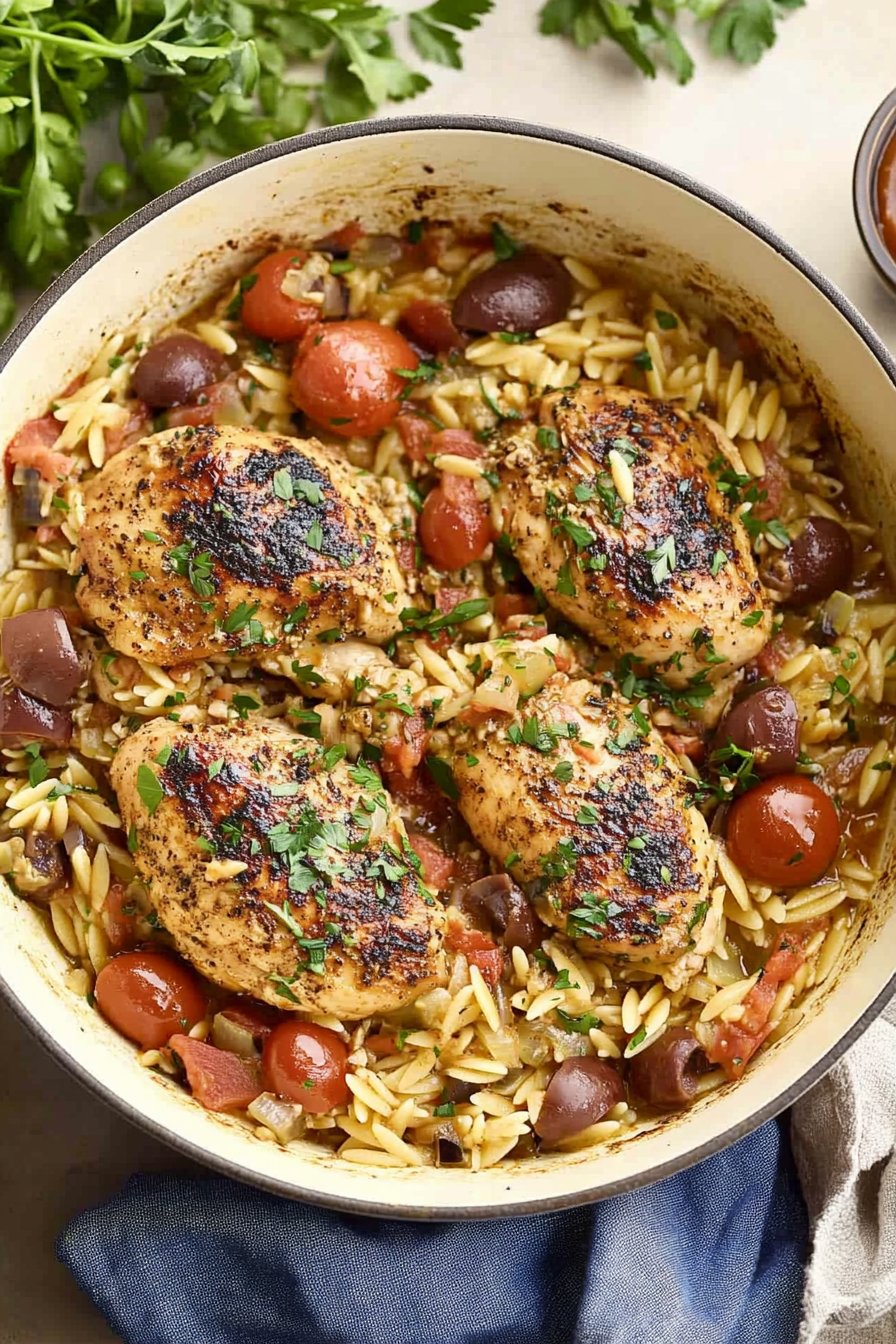
Variations I’ve Tried (Some Better Than Others)
- I once swapped in spinach instead of tomatoes—wasn’t bad, actually, just a bit less punchy.
- Tried using brown rice instead of orzo. That one took forever to cook and, honestly, wasn’t my favorite. Maybe stick to orzo or little pasta shapes.
- Olives are a nice touch if you like them. My youngest thinks they’re evil, so I usually serve them on the side.
Equipment (But Don’t Sweat It)
I use a big skillet or sauté pan with a lid. If you don’t have a lid, just slap some foil on top and call it good. One time I used a Dutch oven—worked a treat, actually.
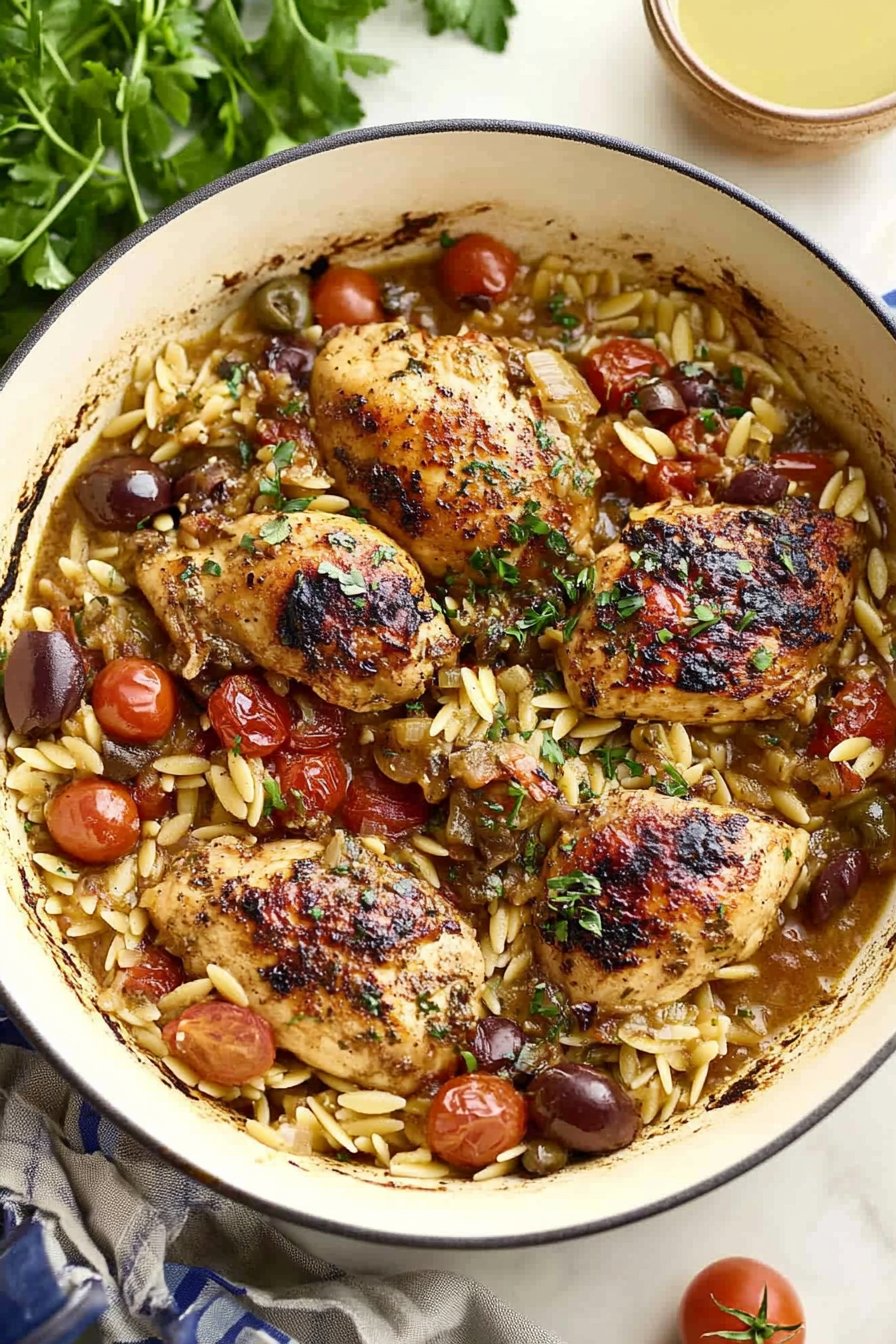
What About Leftovers? (Not That You’ll Have Any)
If you do have leftovers, pop them in an airtight tub and keep in the fridge. They’re good for about two days, though honestly, in my house it never lasts more than a day! You might want to add a splash of stock or water when reheating because the orzo soaks it all up overnight.
Serving Ideas: What I Like
I love it with a simple cucumber salad on the side or just a hunk of crusty bread to mop up the lemony sauce. Sometimes (okay, most times) I scatter extra feta over the top. My mate swears by a handful of fresh dill, so go wild if you’re in the mood.
Things I Learned the Hard Way (A Few ‘Pro’ Tips)
- Don’t skip the lemon zest—it’s where all the flavor hides. I once left it out and the dish was, well, fine, but not special.
- I once tried rushing the orzo step and just dumped everything in cold. Nope. Toasting the orzo in the pan first actually makes a difference.
- If you go heavy on the feta, don’t add too much extra salt—it gets a bit much. (Voice of experience here.)
FAQ (Because People Actually Ask Me These Things)
- Can I use rotisserie chicken?
- Yep! Just shred it and add it in with the orzo. Skip the browning step—dead easy.
- Can I make this vegetarian?
- Sure thing. Just drop the chicken and use veg stock—maybe add in extra veg or some chickpeas. I’ve done it, and it’s grand.
- Is there a gluten-free way to do this?
- Orzo’s made from wheat, so it’s not gluten-free, but I’ve seen some GF orzo at Bob’s Red Mill if you’re in the US. Haven’t tried it myself, but worth a go.
- Where can I find good feta cheese?
- I usually get mine at the local market, but honestly, even the supermarket stuff isn’t bad. If you want to geek out about authentic feta, check this guide—it’s got loads of info.
- Do you really need fresh parsley?
- Not really! Use whatever fresh herbs you’ve got—or skip it. Sometimes I forget, and nobody’s noticed yet.
And, actually, while I’m thinking of it, this dish is even better with a glass of crisp white wine in your hand (just saying). If you somehow manage to not get orzo everywhere, you’re one step ahead of me. Happy cooking—and don’t forget to taste as you go. That’s half the fun!
Ingredients
- 1 lb (450 g) boneless, skinless chicken breasts, cut into bite-sized pieces
- 1 cup (200 g) orzo pasta
- 2 tablespoons olive oil
- 1 medium red onion, diced
- 2 cloves garlic, minced
- 1 cup cherry tomatoes, halved
- 1/2 cup Kalamata olives, pitted and sliced
- 1 teaspoon dried oregano
- 1/2 teaspoon salt
- 1/4 teaspoon black pepper
- 2 cups (480 ml) low-sodium chicken broth
- 1/2 cup feta cheese, crumbled
- 2 tablespoons fresh parsley, chopped
- Juice of 1 lemon
Instructions
-
1Heat olive oil in a large skillet over medium-high heat. Add the chicken pieces and cook until browned on all sides, about 5-6 minutes. Remove chicken and set aside.
-
2In the same skillet, add diced red onion and cook for 2-3 minutes until softened. Stir in minced garlic and cook for 1 minute until fragrant.
-
3Add orzo pasta to the skillet and toast for 1-2 minutes, stirring frequently. Pour in chicken broth and bring to a simmer.
-
4Return the chicken to the skillet. Add cherry tomatoes, Kalamata olives, dried oregano, salt, and black pepper. Stir to combine.
-
5Cover and cook on low heat for 15-18 minutes, stirring occasionally, until orzo is tender and most of the liquid is absorbed.
-
6Remove from heat. Stir in lemon juice and sprinkle with crumbled feta cheese and fresh parsley before serving.
Approximate Information for One Serving
Nutrition Disclaimers
Number of total servings shown is approximate. Actual number of servings will depend on your preferred portion sizes.
Nutritional values shown are general guidelines and reflect information for 1 serving using the ingredients listed, not including any optional ingredients. Actual macros may vary slightly depending on specific brands and types of ingredients used.
To determine the weight of one serving, prepare the recipe as instructed. Weigh the finished recipe, then divide the weight of the finished recipe (not including the weight of the container the food is in) by the desired number of servings. Result will be the weight of one serving.
Did you make this recipe?
Please consider Pinning it!!

